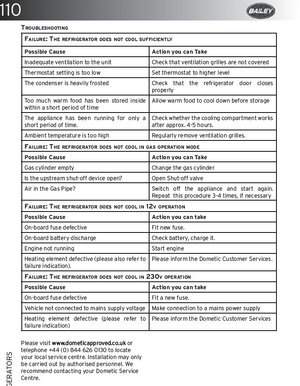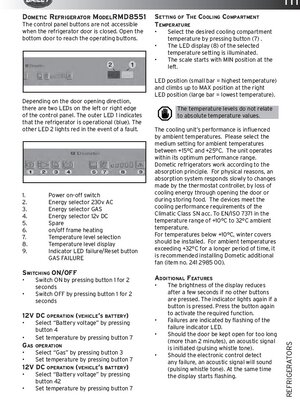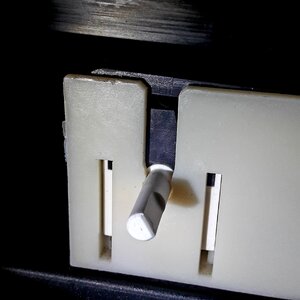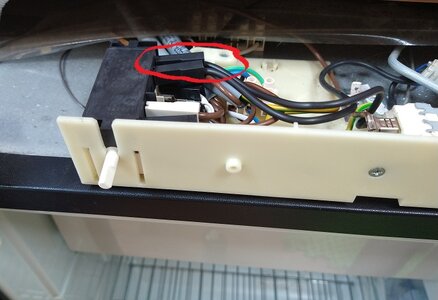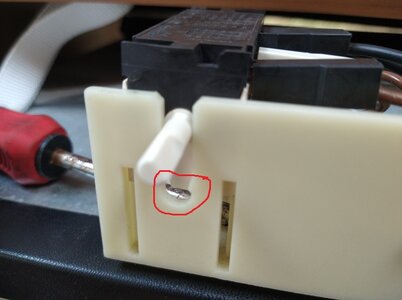We have a 2010 Bailey Pegasus 554 with a Dometic RM 8550 fridge (according to the sticker behind the vege tray).
After much effort and help from several of you, I solved a problem with a stuck corroded igniter battery, thank you, and I was able to start and use the fridge successfully.
However, in our next visit to the caravan (now), I can't start it.
The gas is on at the tank and is getting to other appliances, (and to the fridge I expect, based on the flame starting sound - see below).
All 4 caravan gas isolator switches are on.
I turn the fridge mode to gas.
I push in the temperature (thermostat?) knob in and turn it at least 75% way around and hold it in.
I then press and hold the igniter button in, and I can hear it clicking several times a second. I promptly hear it light up.
I release the igniter button (at that time or even 5 secs later), but continue to hold the temperature knob in for 15 or even 30 secs.
The needle doesn't start moving towards the green, as it did in our last visit, but I don't know what's changed. I release the temperature knob, and try again, but alas, to no avail.
Anyone had this problem before?
Any suggestions?
Edit: The manuals are here, but I'm not yet convinced any of the troubleshooting suggestions there are relevant to my situation.
Thanks.
Terry
NZland
After much effort and help from several of you, I solved a problem with a stuck corroded igniter battery, thank you, and I was able to start and use the fridge successfully.
However, in our next visit to the caravan (now), I can't start it.
The gas is on at the tank and is getting to other appliances, (and to the fridge I expect, based on the flame starting sound - see below).
All 4 caravan gas isolator switches are on.
I turn the fridge mode to gas.
I push in the temperature (thermostat?) knob in and turn it at least 75% way around and hold it in.
I then press and hold the igniter button in, and I can hear it clicking several times a second. I promptly hear it light up.
I release the igniter button (at that time or even 5 secs later), but continue to hold the temperature knob in for 15 or even 30 secs.
The needle doesn't start moving towards the green, as it did in our last visit, but I don't know what's changed. I release the temperature knob, and try again, but alas, to no avail.
Anyone had this problem before?
Any suggestions?
Edit: The manuals are here, but I'm not yet convinced any of the troubleshooting suggestions there are relevant to my situation.
Thanks.
Terry
NZland
Last edited:


